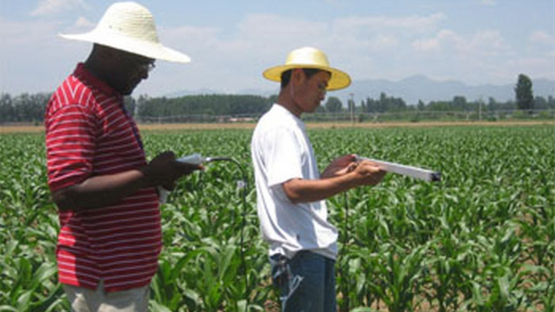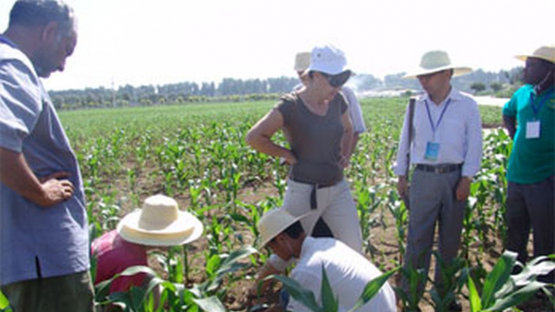The main criteria for a success story require that activities contribute directly and substantially to the prevention of soil erosion or the reclamation of degraded land, using appropriate and cost-effective approaches and technologies for soil and water conservation.
The campaign was a huge success in bringing not only scientists but also key representatives and isotopic equipment from private international company (Picarro Inc.) together to test not only the state-of-the-art but also novel low-technologies for assessing ET under different irrigation management systems. The conventional techniques tested include Bowen ratio and Eddy covariance instruments for latent and sensible heat fluxes to calculate ET; micro-lysimeters for quantifying evaporation, stem flow and heat ratio gauges for plant transpiration measurements; line quantum sensor and camera imaging for estimating canopy cover of the maize crop; TDR, neutron probe and EnviroSCAN for soil water measurements; and finally laser spectroscopy analyser at multiple height above and below the canopy for water vapour collection and oxygen-18 and deuterium (18 O & 2H) isotopic signatures of the water vapour. This high-tech laser method was also compared with two other vapour trapping systems (a semi-automatic and a low-technology method).





